Today, we begin a new Akyat-Bahay sub-series on Semana Santa (Holy Week) processions and related artefacts and stories.
We
start this off with a follow-through on an article published here in September last
year, wherein I advertised, quite cryptically, that a seven-figure, full-sized
(five-foot-scale) processional tableau of “La
Tercera Caida” (The Third Fall of Christ) was then being made by the
renowned Francisco Vecin Workshop of religious art in Makati City, for
completion in time for Holy Week 2007. As it would be unlikely that any artist or
craftsman would simply initiate the creation of such a large work without a
specific commission, it might have led some readers to wonder what the real
circumstances were behind the advertised sale.
With Holy Week recently over, now the full story can be told.
- - - - -
In
April 2006, shortly after Holy Week, I had, on my family’s behalf, commissioned
a “Third Fall of Christ” processional
tableau from the Vecin Workshop. Our
plan was to use this to participate in the Holy Week processions in our
ancestral home’s newly-spun-off parish in Caingin, San Rafael
Let me digress a bit now. Ever since I was very young (but old enough to walk), I had keenly participated in the Holy Week processions in our parish in Barasoain Malolos with my grandfather, and, after he died in 1980, with my father. We would follow either the Valenzuela family’s “Agony in the Garden” or the much grander (with brass band in tow) “Tercera Caida” of the Bernardo family.
Let me digress a bit now. Ever since I was very young (but old enough to walk), I had keenly participated in the Holy Week processions in our parish in Barasoain Malolos with my grandfather, and, after he died in 1980, with my father. We would follow either the Valenzuela family’s “Agony in the Garden” or the much grander (with brass band in tow) “Tercera Caida” of the Bernardo family.
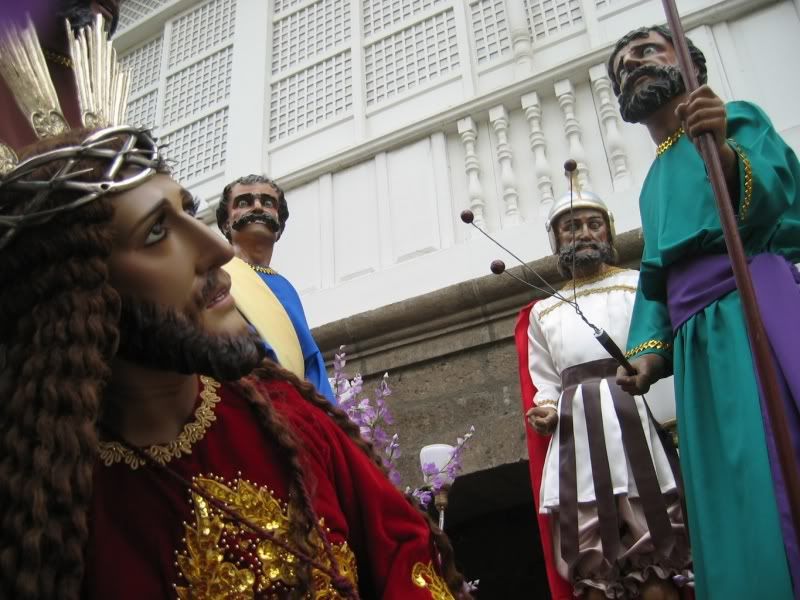

The
latter must have made quite an impression on me, because when I had to choose
what tableau my family would commission for our ancestral home, there was no
doubt in my mind that it had to only be the “Fall of Christ.” Also, I was mindful that there was an
unspoken notion amongst “aficionados” of Holy Week processions in the Philippines
In
our early discussions that summer, Mr. Vecin and I had agreed that this tableau
would be modelled on the best of the “Tercera
Caida” examples in the Philippines

Kiko
Vecin had kindly lent me the above pictures from his extensive photographic
collection of Holy Week processional tableaux, so that we could come to a
consensus on the key design elements.
After some thought, and after examining these antique examples
carefully, we agreed that we would emulate these models in having seven
figures: Christ, Simon of Cyrene, two Jewish temple guards, a drummer, a trumpeter-cum-standard
bearer, and a Roman Captain directing the whole show from the rear.
We did not know it at that time, but recent photographic research through some very knowledgeable and especially generous online contacts revealed other outstanding “Tercera Caida” examples in other places such as Meycauayan in Bulacan and Santa Rita and Porac in Pampanga. The latter two were remarkable in that not only did they have silver-plated or solid silver carrozas, but they also had their Roman Captains mounted on handsome white horses from the Roman cavalry. I’m sure that if we had seen these photos at that time, Kiko and I would have endeavoured to put our Roman Captain on horseback as well.
We did not know it at that time, but recent photographic research through some very knowledgeable and especially generous online contacts revealed other outstanding “Tercera Caida” examples in other places such as Meycauayan in Bulacan and Santa Rita and Porac in Pampanga. The latter two were remarkable in that not only did they have silver-plated or solid silver carrozas, but they also had their Roman Captains mounted on handsome white horses from the Roman cavalry. I’m sure that if we had seen these photos at that time, Kiko and I would have endeavoured to put our Roman Captain on horseback as well.
As this was to be a large tableau of seven figures and a large bulky cross and therefore a large (mainly long) carroza, it was imperative that the Vecin workshop’s artists and craftsmen got to work immediately. And so they did, carving the Christ straight away. By mid-May 2006, the following figure of the fallen Christ was ready for my inspection.

For some
reason, Kiko was unhappy with this figure, though I couldn’t really see why – I
thought that it was superb and could already imagine in my mind the painted and
dressed image that would result from it.
But he had already anyway made another Christ image, which was the one
he preferred to work on for our tableau.
The figures of
the Roman soldiers, Jewish temple guards, and Roman Captain (standing and
horseless) were also started to be carved simultaneously. Steady progress was being made on all of
these for several weeks all the way to the middle of 2006.
Meanwhile in
July, through the recommendation of a friend and fellow client of the Vecin
Workshop, I had joined a couple of web-based discussion groups devoted to Holy
Week processional images. (That’s how
specialized everything seems to have become in today’s fully-wired – or indeed
wireless – world.) One of my first
discoveries there was a heretofore unknown to me 18th century
Spanish sculptor of religious images named Francisco Salzillo (1707-1783), who
was active in the city of Murcia Spain Murcia
I thought, Kiko must see this. So with laptop in hand, I visit his workshop and show him the video and a slide show of the photographs that I had managed to download from the web.
Fortunately, I was not as naïve and impressionable as I had feared I might be. The pictures and video WERE awe-inspiring. Even Kiko was dumbstruck after seeing Salzillo’s “La Caida.”
And in both our minds, we were thinking – drat! – back to the drawing board for my family’s “Tercera Caida.” The drummer and trumpeter-standard bearer have to go – they were an unnecessary distraction in the scene. A few adjustments have to be made to the temple guards – they have to be more dynamic than how they’re usually depicted in the
It was at this
stage that one really comes to value a close relationship with one’s santero.
Conceivably, any other artist or craftsman might have said, “Look, sir,
we agreed that you would purchase a seven-figure “Tercera Caida,” modeled on those photographs of other Philippine
examples that we looked at a few months ago.
Well, that’s what you’re getting, that’s what you’re going to have to
pay me for, and that’s that. Or I’ll see
you in court.”
Instead, Kiko
Vecin’s own life-long passion for, and interest in, Holy Week processional
images as devotional objects, enabled him to go beyond simply being a supplier
of products to clients, and allowed him to realize, even before I did, that he
had no choice but to rethink the whole project.
If religious art was created primarily for devotional purposes, it was
simply inconceivable that, after one had seen the Salzillo, one would not be
inspired by it and not use it as a model.
To ignore it would be both an artistic and a devotional cop-out.
So for most of
the rest of that third quarter of 2006, Kiko must have spent considerable time
and brain cells examining the Salzillo in detail via photographs, and thinking
about how he could, perhaps not really copy, for that would not be the honorable
artistic approach, but be inspired by it to create something different for my
family and me.
Which left us
with at least two unneeded Roman soldiers and two sidetracked fallen Christ
figures. Which is why, before the
quarter was over, I had posted the “Fall of Christ” advertisement on this
website. It was really the least I could
do, after I had opened the Pandora’s box and given its contents to Kiko Vecin and
his workshop.
victorancheta wrote on Apr 16, '07
Congratulations Leo! Your family's Tercera Caida is a real treasure! Future generations of santo addicts will surely love it.
Also, I've shown Alex another handsome Spanish Caida. I think you'll like it too. It's from Zamora. Although of course, Salzillo's is still the best. |
rally65 wrote on Apr 16, '07
Victor, hold your horses, the story's just begun -- let me finish writing it! Ha ha.
Where is that Zamora Caida? Can you send it to me too? |
pkalabaw wrote on Apr 16, '07, edited on Apr 16, '07
A very inspiring story of a devotee and a devoted religious artist, an exact representation of how religious images/tableau is planned, conceptualized and made into reality, not only as images of devotion but as impressive works of art. You met Mr. Vecin and he met you. I can't wait to read the continuation.
By the way, your recommendation of having Mr. Vecin, his desire not only to profit from his trade but also to help devotees realize their dreams, is a priority if the plans will push through regarding the restoration of a silver plated carozza, reconstruction of Calvario and the making of a marian image here in our parish. Thank you as always, wencam of cavite (SSF) |
rally65 wrote on Apr 16, '07
Wencam -- Thanks for visiting. Good luck too on all your projects, and God bless.
|
nsconsolacionycorrea wrote on Apr 17, '07
For me, the best Semana Santa scenes were the dramatic ones like Tercera Caida, La Encuentro Doloroso and etc. I saw a Tercera Caida tableau in Seville (Hermandad de Triana, Madrugada de Viernes Santo); one soldier there was riding in a beautiful horse.
Each parish should have a Tercera Caida tableau ..haha!!. |
rally65 wrote on Apr 17, '07
So Nikki, why don't you commission a "Tercera Caida" now? ;-)
The ones in Porac and Santa Rita, Pampanga, also have horses in the cast. Can you send me photos of the one in Seville? |
nsconsolacionycorrea wrote on Apr 17, '07, edited on Apr 17, '07
Here it is
You can notice at the back of Christ the weeping women of Jerusalem were there. |
rally65 wrote on Apr 17, '07
Wow, a left-handed Cristo for a "starboard" side-oriented tableau! Do please post these in the SSF thread as well if you haven't yet, Nikki.
|
nsconsolacionycorrea wrote on Apr 17, '07
Okay....as you wish
|
jvlian wrote on Apr 17, '07
wow i'm looking forward for part 2!
|
alvinjay2000 wrote on Apr 18, '07
The story is inspiring cant wait for the continuation.
|
chris1958 wrote on Jul 1, '07
This was great...Thanks for the pics. Made me feel as I was there.
|
japett wrote on Feb 14, '08
please help me naman . anyone n amayroon contact pewrson sa paete laguna, mag papa ukit kc kme ng dolorosa
pls email me or contact me kubijr07@yahoo.com 0922-8890243 |
paekiss wrote on Apr 29, '10
very nice
|
jellocubelo wrote on Oct 7, '10
Fascinating. I have a copy of the estampita of this that Sir Louie distributed. =)
|
rally65 wrote on Oct 7, '10
Good to know that the stampita got that far!
|
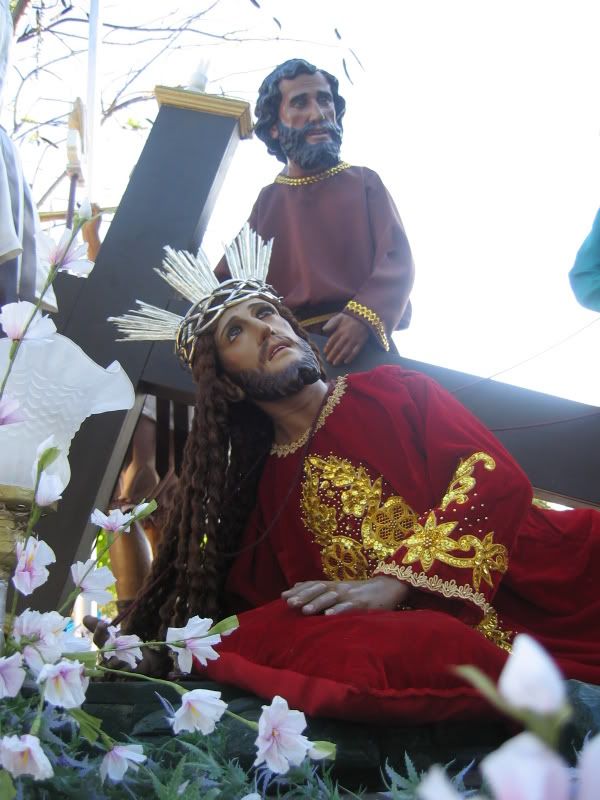

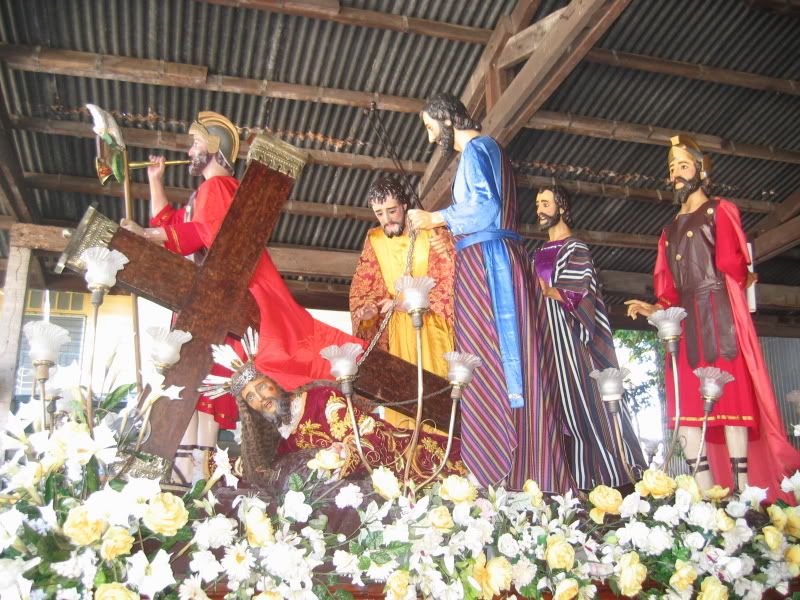
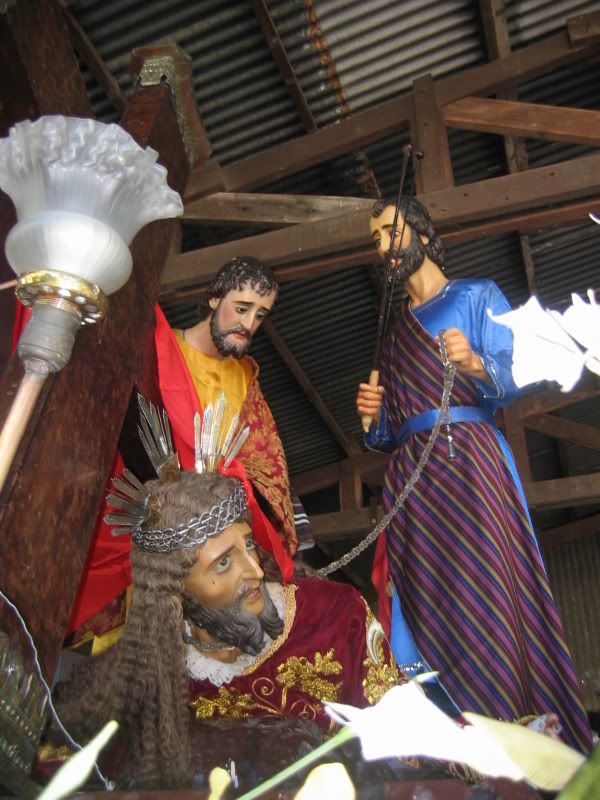







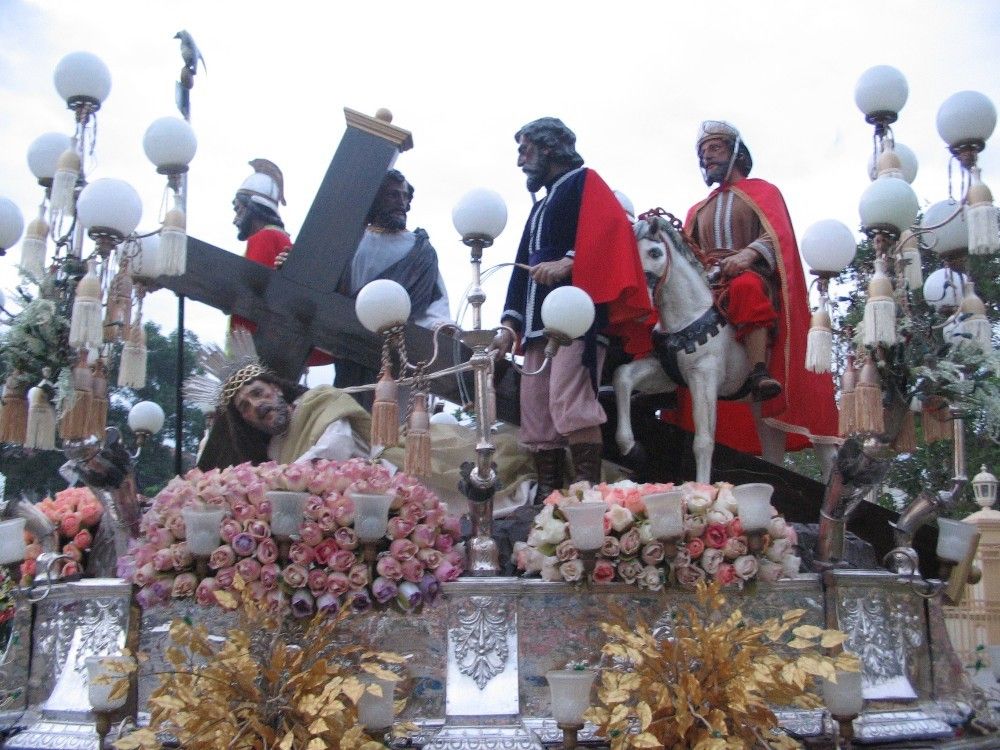
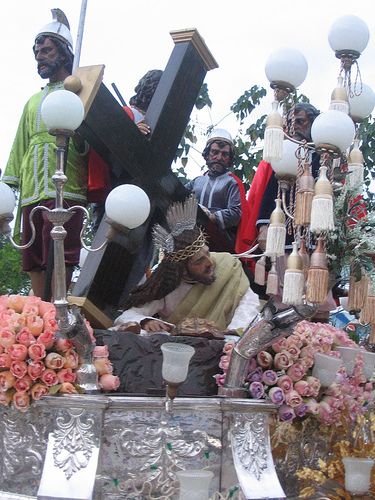

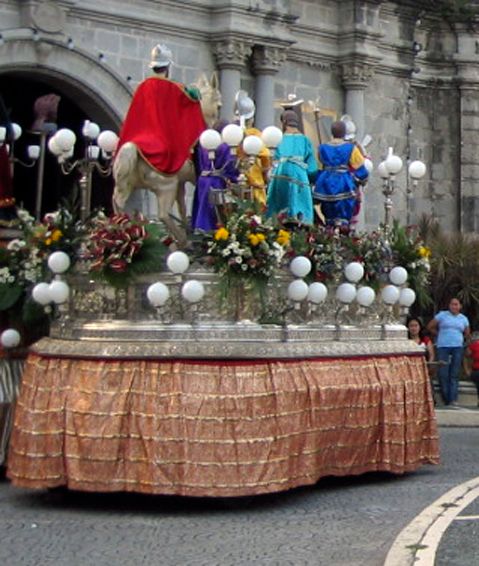


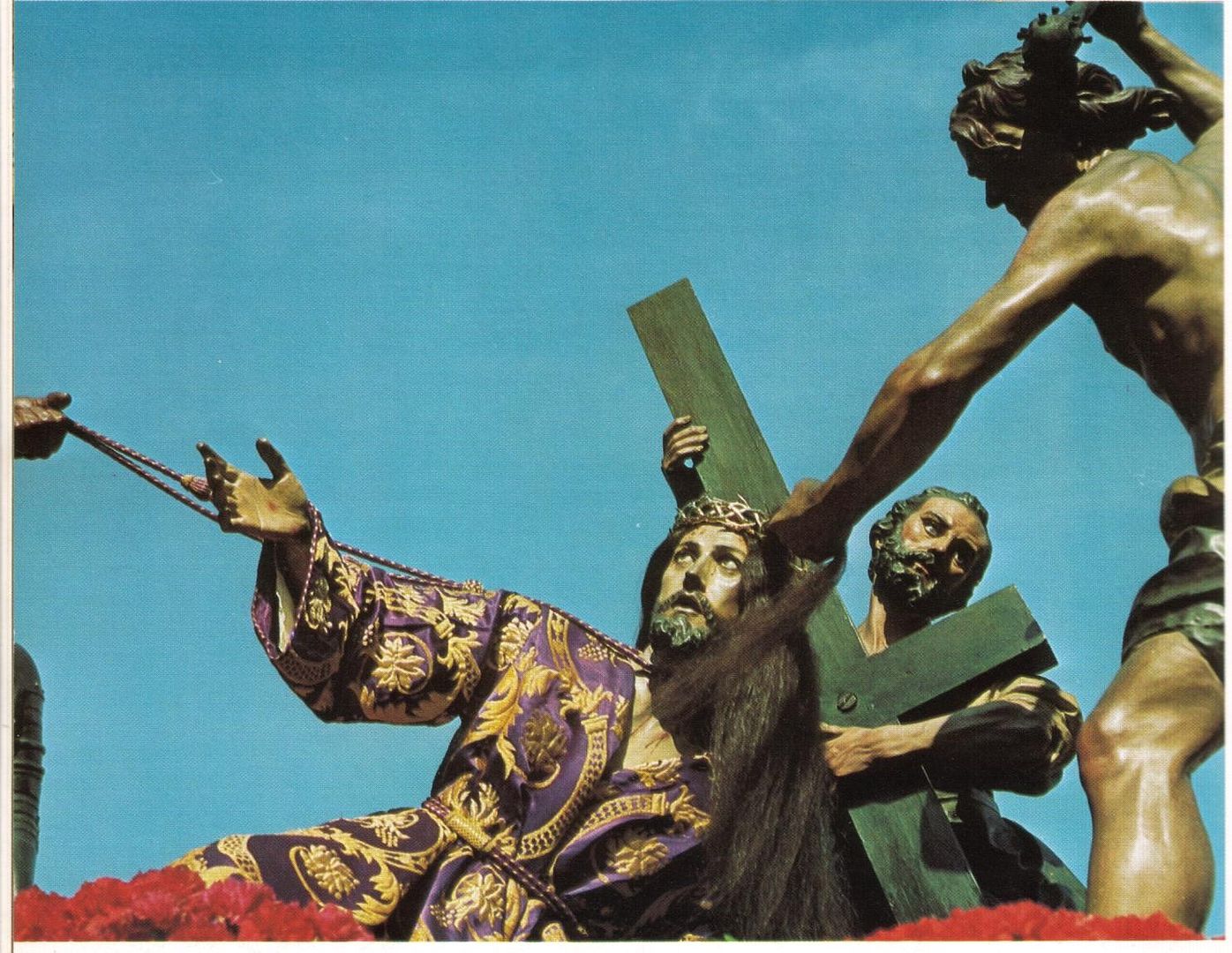
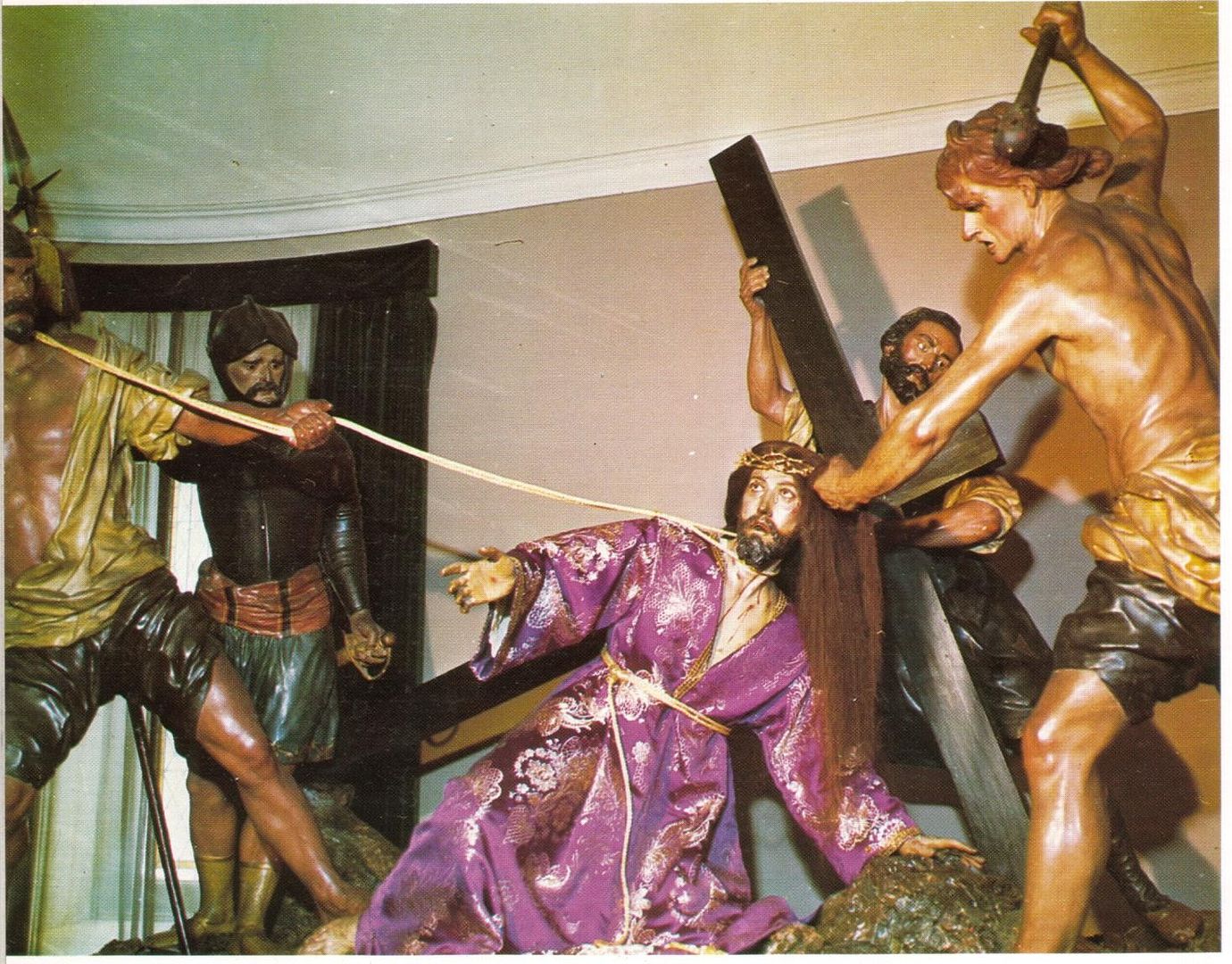

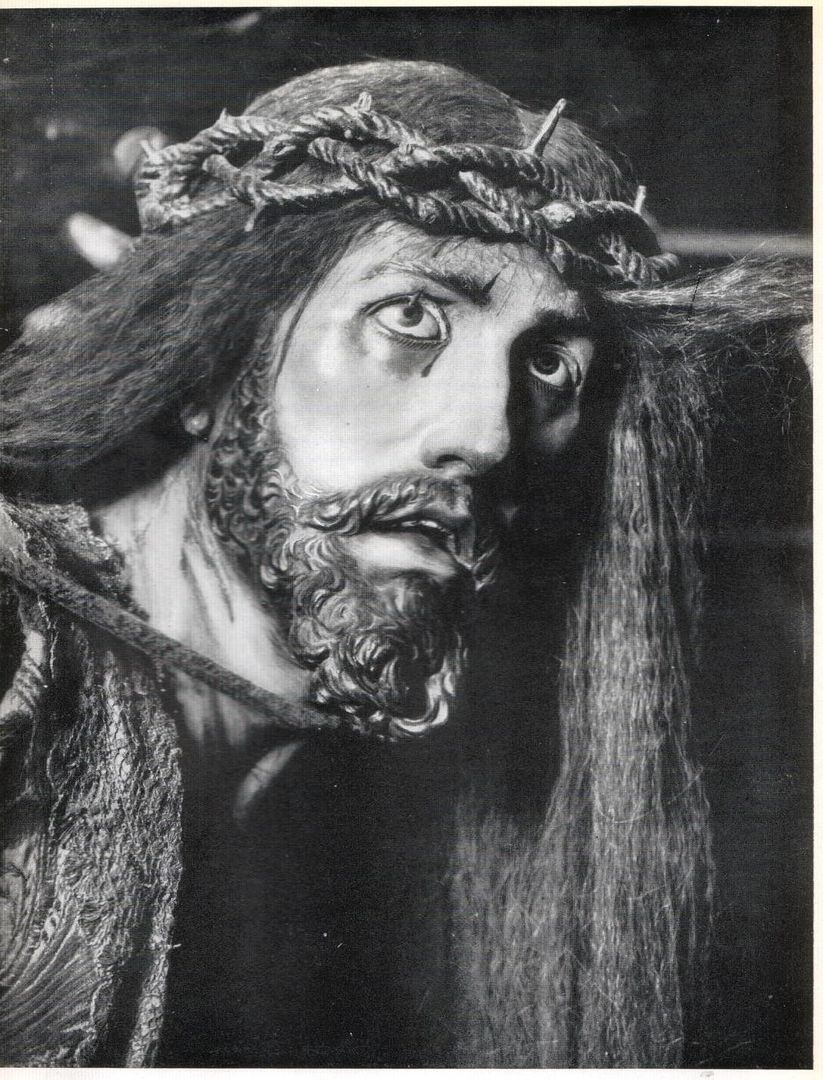

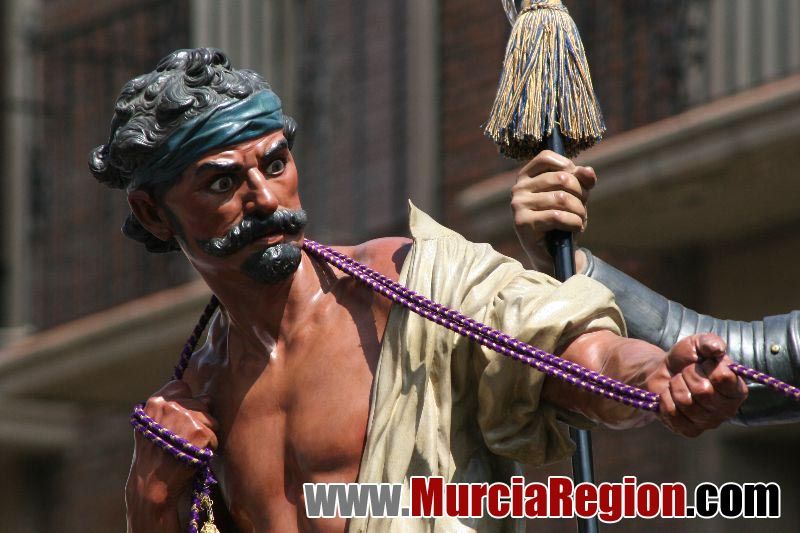
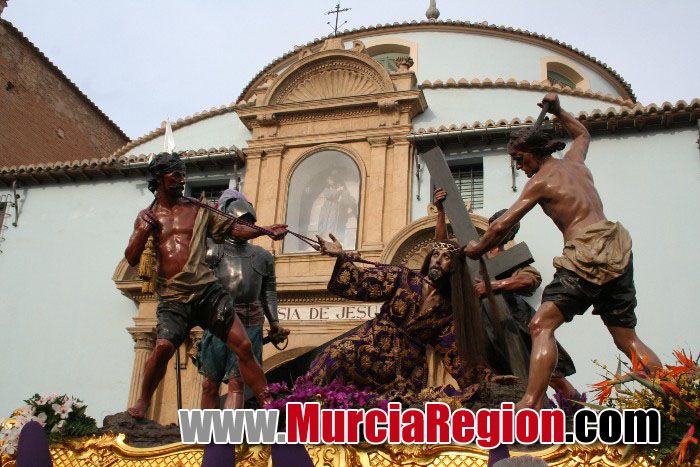
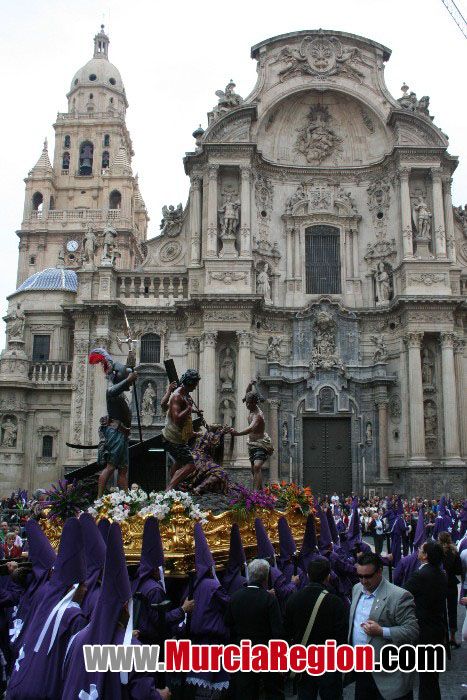
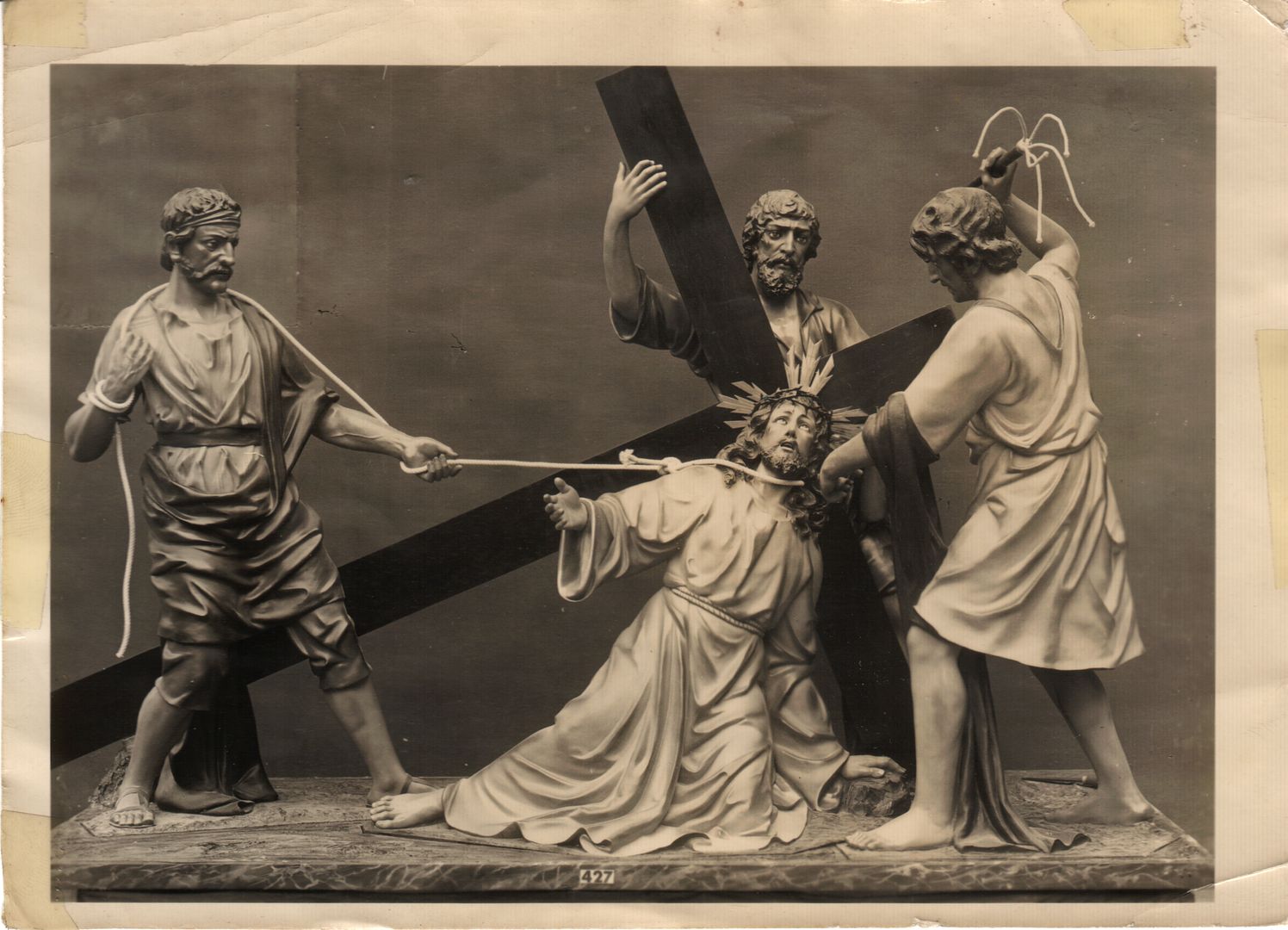
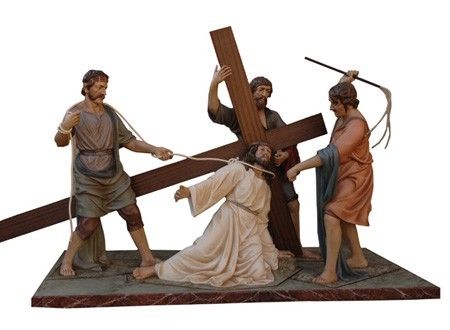
No comments:
Post a Comment